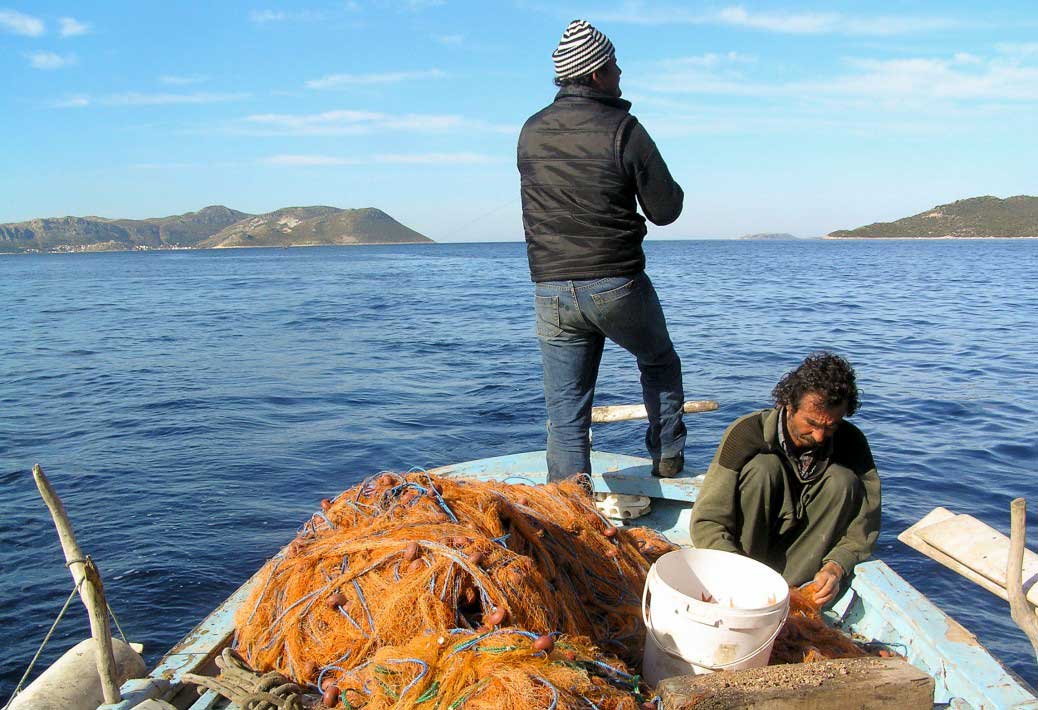
Turkey
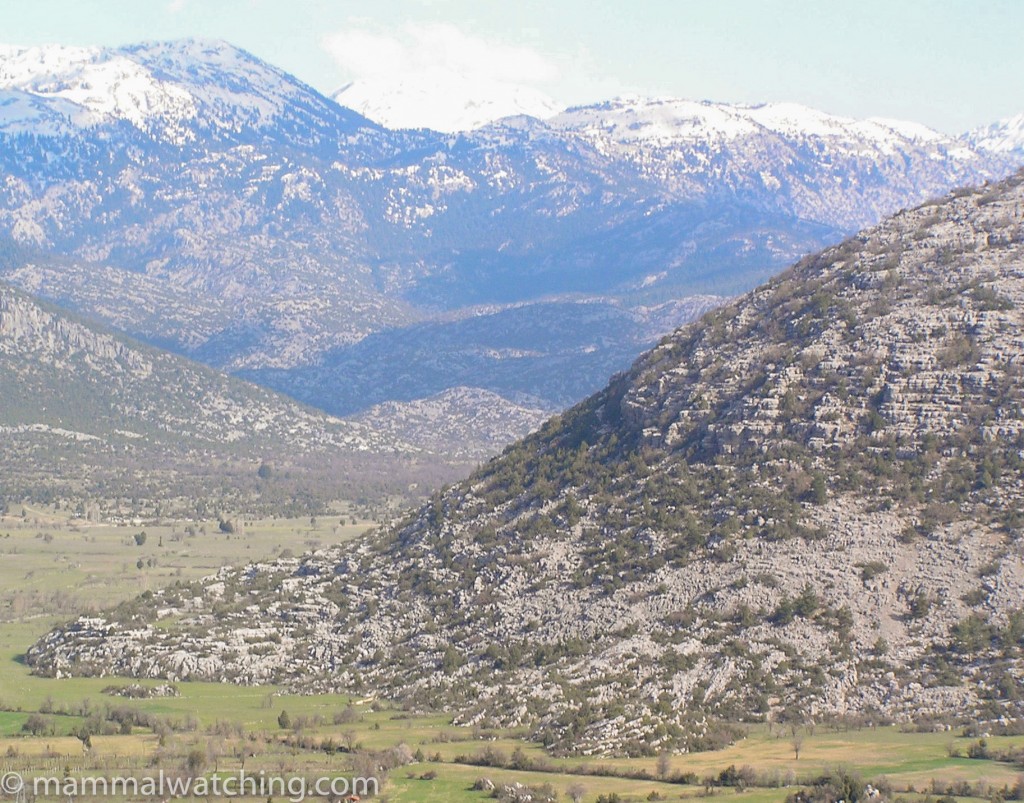
Aladag Mountain
I spent a couple of days mammal watching in Turkey when I was over there on a work trip in April 2006, and returned again the following year.
I planned my first weekend around trying to see Mediterranean Monk Seals, of which only a few hundred remain in the world, a portion of which are at scattered localities around the Turkish coast. From there I wanted to see Wild Goats (sometimes referred to as Bezoar Ibex) which I was told are pretty easy to find in the right areas. In the end I wasn’t successful in my quest to see either animal, but did manage to see a few nice mammals on the way. I returned in June 2007 again for work and managed to return for a few hours to Aladag Mountain.
Kas
Before I left for Turkey I’d got in touch with AFAG, a Turkish NGO set up to protect Mediterranean Monk Seals to find out how I might see them near Antalya, on the south coast. They put me in touch with the Dragoman Travel Agency in Kas run by Gokhan Ture who sadly passed away in 2014. But the agency – Dragoman Outdoor Travel Agency, Phone:+ 90 242 836 3614 – still exist and know about the seals as of 2022.
Gokhan is actively involved in seal conservation and was good enough to arrange for me to hitch a ride with some local fisherman for a few hours. He reckoned my chances would have been very good in the quieter winter months, especially in February when the fisherman use long lines and see seals eating the fish off the hooks most days. But by April the fisherman were using nets again, which, coupled with a bit more boat traffic than in winter, meant the seals are somewhat harder to see.
I flew into Antalya in the evening, hired a car and drove the 3 hours to Kas where Gokhan met me at 11 p.m. with the news that the fishos wanted to leave at 2am (in 3 hours time), rather than the 5 a.m. I’d been counting on. So after a couple of hours kip in a hotel I was back at Kas harbour. Although the seals are active at night there wasn’t a great deal to see in the dark so I grabbed a few hours more sleep on the deck, lulled by the diesel fumes and throb of the outboard.
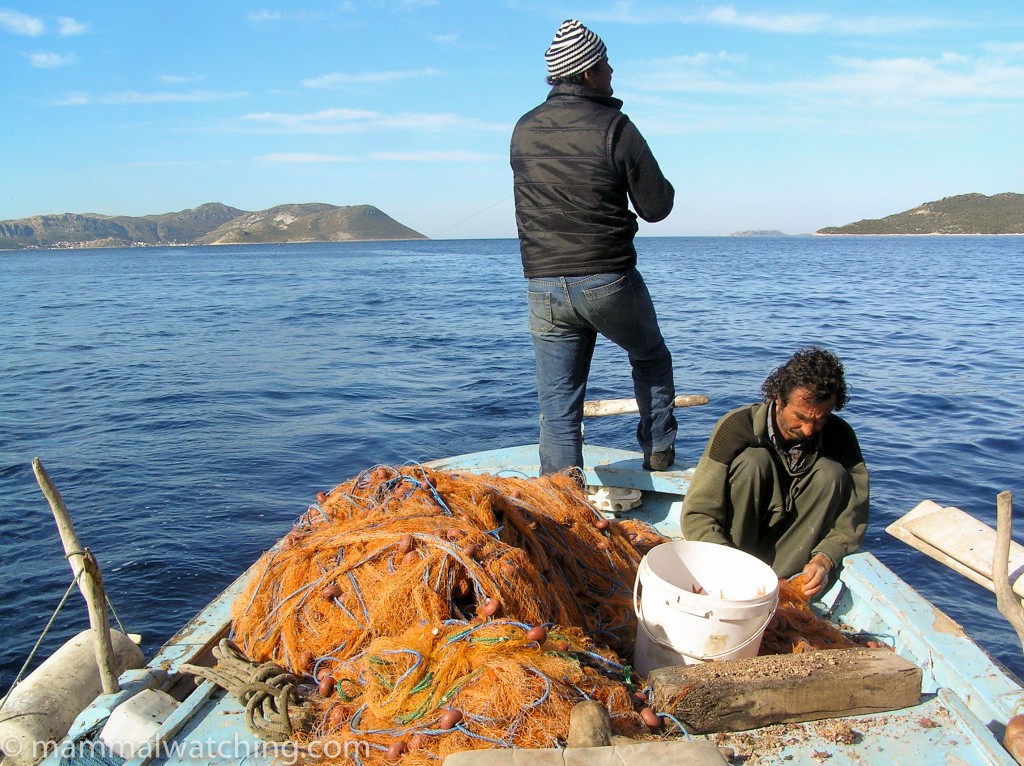
Kas Fishermen
The sun rose just after 6am and I thought we’d lucked out until the ‘seal’ that was cruising around the nets turned into a Bottlenose Dolphin. The fishermen pulled in the nets and 4 hours later we were back in Kas. No seals but the view was pretty speccy.
Back in Kas Gokhan suggested I might try my luck at Foca (on the west coast) or Boyazi-Mersin, between Antalya and Adana, both of which had small but well-studied seal populations. But Kas, in the winter at least, was as good a place to look as any he thought.
Akseki
After a quick shower and brekky I was on the road again at 11 a.m., back to Antalya then a couple of hours further east and north to the small town of Akseki, where various birders had seen Persian Squirrels. They are supposedly common in a walled plantation somewhere near town and at another woodpecker site on the Asheki bypass (neither of which I had directions to). So I wandered around a graveyard by the soccer stadium which had a small stand of woodland.
No squirrels but several tortoises. I’d been spotted by a zealous Aksekian, and the Chief of Police was waiting for me when I left the cemetery. He was very polite but wanted to make sure I wasn’t in search of archaeological treasure. I explained about the squirrels and, after conferring with the rest of the force, he said that he’d seen once seen one at another cemetery at the top of town (near the college). Off I went, and, within 3 minutes, I had seen my first Persian Squirrel. An attractive thing and very like a Red Squirrel.
To get to the cemetery head into town. As you are going up the hill, turn left immediately past the police station and follow the switchbacks up the hill for a few hundred metres at which point you’ll see the cemetery on the right.
Aladag Mountain
It took another 6 hours to get to the Ozsafak Pension near Camardi (south east of Nigde). A popular spot with birders, who travel there to look for Snowcocks on Aladag Mountain, and who sometimes report Wild Goats (Capra aegagrus). Ali Safak, who deals with phone queries about the pension and speaks good English, thought I’d have little trouble finding the goats.
It was well after dark when I left the small town of Pozanti for the hour’s drive to Camardi. About 20km from Camardi (and at 9.30pm) I saw a Beech (Stone) Marten on the road (just a fleeting glimpse but Pine Martens in Turkey are rare and restricted to old growth forest). A few kilometres further on I saw a small mammal crossing the road which disappeared under my wheels. I spun the car round to find I’d unfortunately squashed a Grey (Migratory) Hamster. A beautiful thing about the size of a large mouse, with a very short tail and rich fur.
The next morning we set up the mountain in a 4WD to look for the goats. They’d seen 20 up there the day before, at around 2500m. But there had been heavy snow overnight and so we could only drive to within an hour’s walk of the right spot. As we trudged up the track, through about 30cm of snow, the cloud cover increased and the only thing that was clear was that we wouldn’t see any goats unless we got within 50m of them.
There was a chance that the clouds might have cleared I guess, but the snow got deeper and we could no longer work out where the road was. So I decided to leave the goats for another trip.
Instead we drove around the valley looking for Asia Minor Ground Squirrels (Gelenji is the Turkish name, Spermophilius xanthoprymnus the Latin), eventually seeing one not far from the pension. They are very similar to European Sousliks, and are abundant in the summer. But it was a bit too cold to find many active when we were looking.
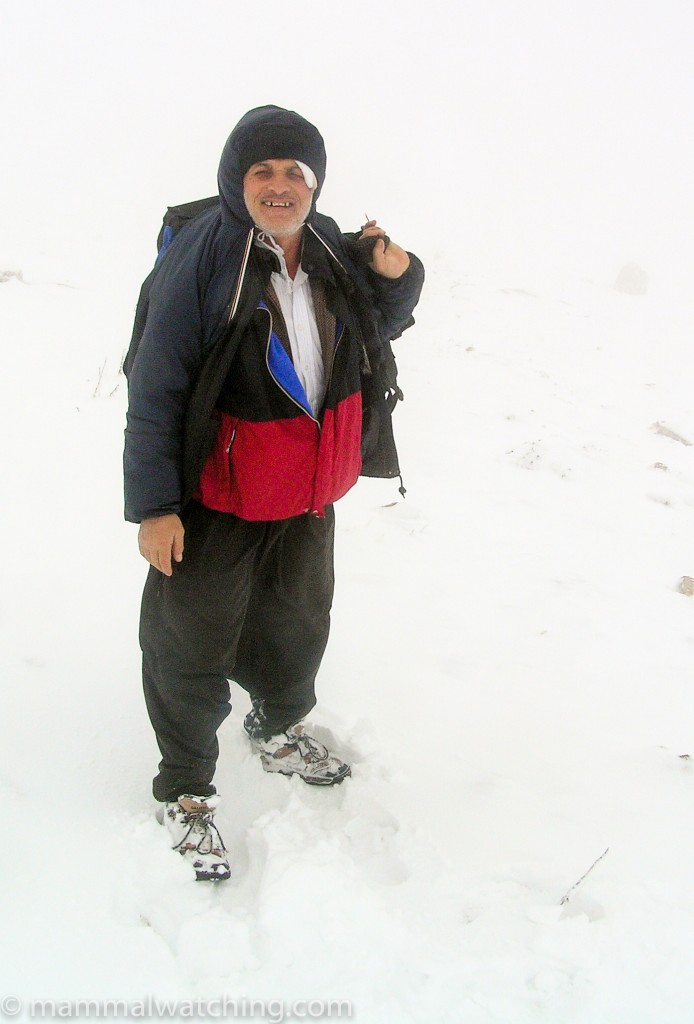
Ali Safak, Aladag Mountain
Aladag is a nice spot, and the pension was comfortable, welcoming and good value. But if you do decide to take a guided trip it is worth double checking the price beforehand. There was some “confusion” when I came to pay about the price I had been quoted. They wanted to charge me separately for a guide and vehicle. The price I had been given was half the final amount: the quote I was told, only for vehicle.
I saw a couple more Ground Squirrels on the 5 hour drive to Ankara (there was a colony about 15 k.m. south east of Guzelyurt, between Nigde and Anksaray), though would undoubtedly have seen a few more in the summer (they are reputed to be abundant between Karaman and Eregli for instance).
I went back to Aladag in June 2007. I arrived at 2 a.m. and on the drive from Pozanti that night again saw a Beech Marten on the road as well as a Southern White-bellied Hedgehog (Erinaceus concolor). We found some Wild Goats (Capra aegagrus) easily enough on the top of a cirque the next morning. I spent an hour or so walking along the river near the pension looking for Water Shrews (which were supposed to be quite common) without any luck.
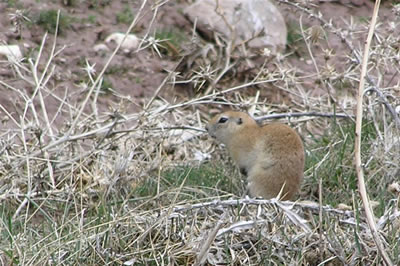
Asia Minor Ground Squirrel, Spermophilus xanthoprymnus
Work took me to Ankara, where I didn’t see any interesting creatures unless you include a “nightclub” full of at least 100 Russian women, who would share a beer with if you thought 50 euros for 10 minutes was worth it.
Istanbul
From Ankara I went on to Istanbul, where I was pleased to see a good number of Bottlenose Dolphins in the Bosphorus estuary (in the heart of the city). In June 2007 I spent a week working in Istanbul. I didn’t spend any time mammal watching but did see another Beech Marten, in the gardens of the Hilton Hotel near Taksim Square at about midnight!
Charles Hood also reports a reliable spot for Persian Squirrels in Istanbul as follows:
Based on two brief visits (March 2012, June 2012), Persian Squirrel seems a reliable tick in Yildiz Park near Central Istanbul.
Yildiz Park is northeast of central tourist Istanbul, about a mile from Taksim Square as the Rose-ringed Parakeet flies. (Longer distance, if walking.) At least in spring and summer, the squirrel is easy and could be done as part of a regular tourist day. Plan on arriving moderately early (an hour after sunrise), and in fact, just by riding in a taxi slowly up and down the main axis road, a person might even see one from the car. On foot, it should take ten minutes or less. The most productive place appears to be the lower half of the park, in the overgrown woodland along the main stream.
One could hire a taxi, see the squirrel, and be back at most of the central hotels in time for coffee before the museums open.
If coming from anywhere in Old City, cross Galata Bridge on the main coastal road heading north. On the right will be (in order, south to north) the Kabatas tram stop and ferry terminal, Dolmabahce Palace, the Four Seasons Bosporus, and Curagan Palace. Immediately after this palace the park is sign-posted on the left; there is a police checkpoint and an obvious entry gate in a wall. Squirrels can be found throughout the park, and on the visits listed above, seemed common, even abundant. One would assume mid-week is preferred (for crowds), and earlier seemed better than later. Common parkland birds are present too, and a few feral dogs, but no actual wildlife to speak of.
If I return to Istanbul I’ll try to find time to look for the European Sousliks that are supposed to be common about one to two hours drive out of Istanbul, e.g. Uskumrukoy and Tekros north of the city, Buyuk, Cekmece and Selmpasa west of the city and further west towards the town of Edrine, in the province of Thrace.
Finally, I must give thanks to Dr C. Can Bilgin from the biology department at the Middle East Technical University in Ankara for all his detailed help on Turkey’s mammals as well as corrections to this page. I include below some notes he gave me on other species I did not see in Turkey (but which I hope to find time to return to look for).
Asian Garden Dormouse Eliomys melanurus: Very difficult. Urfa near the Syrian border.
Small Five-toed Jerboa Allactaga elater: Only the extreme east near Igdir.
Euphrates Jerboa Allactaga euphratica: Along the Syrian border.
Brandt’s Hamster Mesocricetus brandti: Most of inland Turkey in steppes and field edges. Surely between Aladag and Ankara.
Indian Crested Porcupine Hystrix indica: South of Taurus range and at the Aegean coast.
Caracal Felis caracal: Typically in Mediterranean shrubland in the south but also some records in the more barren neighboring inland higher ground (e.g. south Van, south Konya)
Eurasian Lynx Felis lynx: Most mountainous woodland. Probably occurs around Aladag, certainly at Soguksu NP (an hour north of Ankara) but difficult to see.
Least Weasel Mustela nivalis: Anywhere.
Marbled Polecat Vormela peregusna: Inland regions (surely between Aladag and Ankara) but rare.
Egyptian Rousette Rousettus egyptiacus: Mediterranean coast (easiest to see in Antakya/Hatay)
Naked-rumped Tomb Bat Taphozous nudiventris: Only known from Nizip, SE Turkey.
Guenther’s Vole Microtus guentheri: The most common vole inland, forming large colonies. Some researchers claim this taxon occurs only in western SE Turkey and is replaced by the endemic M. lydius further west.
Persian Vole Microtus irani: Reported from SE Turkey but identity problematic.
Sibling Vole Microtus rossiaemeridionalis: Common solitary vole in most of northern half of Turkey. Prefers more humid micro-habitats.
Social Vole Microtus socialis: Eastern half of Turkey.
Major’s Pine Vole Microtus majori: Eastern Black Sea region.
Caucasian Snow Vole Chionomys gud: Rocky humid highland in Eastern Black
Sea region.
European Snow Vole Chionomys nivalis: High mountains including Aladag (1200-2000 m)
Robert’s Snow Vole Chionomys roberti: Humid forests in Eastern Black Sea region.
Long-clawed Mole-Vole Prometheomys schaposchnikowi: High meadows in the extreme north east
Transcaucasian Mole-Vole Ellobius lutescens:Highlands in extreme southeast.
Asia Minor Spiny Mouse Acomys cilicicus: One single locality around Silifke (Mersin).
Tristram’s Jird Meriones tristrami: Relatively common in inland steppe.
Vinogradov’s Jird Meriones vinogradovi: Extreme east.
Persian Jird Meriones persicus: Local in eastern TR.
Striped Field Mouse Apodemus agrarius: In northern Thrace (European Turkey).
Broad-toothed Field Mouse Apodemus mystacinus: Rocky areas especially in the south.
Yellow-breasted Field Mouse Apodemus fulvipectus: Most of inland Turkey (=A. iconicus)
Pygmy Field Mouse Apodemus uralensis: Northern Turkey.
Macedonian Mouse Mus macedonicus: Widespread.
Lesser Mole-Rat Nannospalax leucodon: Now considered only to occur in European Turkey.
Nehring’s Blind Mole-Rat Nannospalax nehringi: Most of Asian Turkey except
for the southeast.
Woolly Dormouse Dryomys laniger: A high altitude (1600-2000 m) species. Prefers rocky and stony slopes.
Roach’s Mouse-tailed Dormouse Myomimus roachi: Western fringe of Turkey. Occurs in hedgerows in Tekirdag. and Edirne.
Levantine Mole Talpa levantis: Common mole in the north.
Radde’s Shrew Sorex raddei: Eastern Black Sea region.
Bicolored White-toothed Shrew Crocidura leucodon: Widespread.
Community Reports
Antalya, 2024: Karina & Andrey, 2 weeks & 9 species including Bezoar Ibex (Wild Goat), Egyptian Fruit Bat and Taurus Ground Squirrels.
Turkey Road Trip 2022: Ralf Burglin’s account of 2 weeks, 3000km & some good mammals including Wild Goat and Nehring’s Blind Mole-Rat.
Turkey, 2022: Jan Ebr,18 days & 17+ species including Nehring’s Mole-rat, Trans-caucasian Mole-vole, Woolly Dormouse and Marbled Polecat.
Lykia & the Taurus Mountains, 2022: Daan Drukker, 9 days & 11 species including Taurus Ground Squirrel, Wild Goat, (authentic) Fallow Deer and Egyptian Fruit Bat.
Southwestern Turkey, 2021: Ian Green, with species including Caracal, Jungle Cat, Indian Porcupine and Nehring’s Mole Rat.
The Balkans, 2016 (and some flashbacks to the early 1990s): Vladimir Dinets, 6 weeks and 100+ mammals including Martino’s Snow Vole, Romanian Hamster, Western Broad-toothed Mouse, Bicoloured and Etruscan Shrews, a Mediterranean Monk Seal and European Polecat.
Antalya, 2015: Jordi Palau’s report of seeing Wild Goats and Persian Squirrels in southern Turkey.
Turkey, 2014: Benjamin Schweinhart, 10 days & 10 species including Long-eared Hedgehog and Goitred Gazelle.
Persian Squirrels in Istanbul, 2012: Kevin Bryan’s very helpful guide on an apparently excellent and convenient location to see a Persian Squirrel (albeit likely an introduced population).
Also See
Taking a thermal imager to Turkey, February 2025
Hamster ID from SW Turkey, December 2023
Can anyone ID this baby rodent from SW Turkey? December 2023


Leave a Reply
You must be logged in to post a comment.